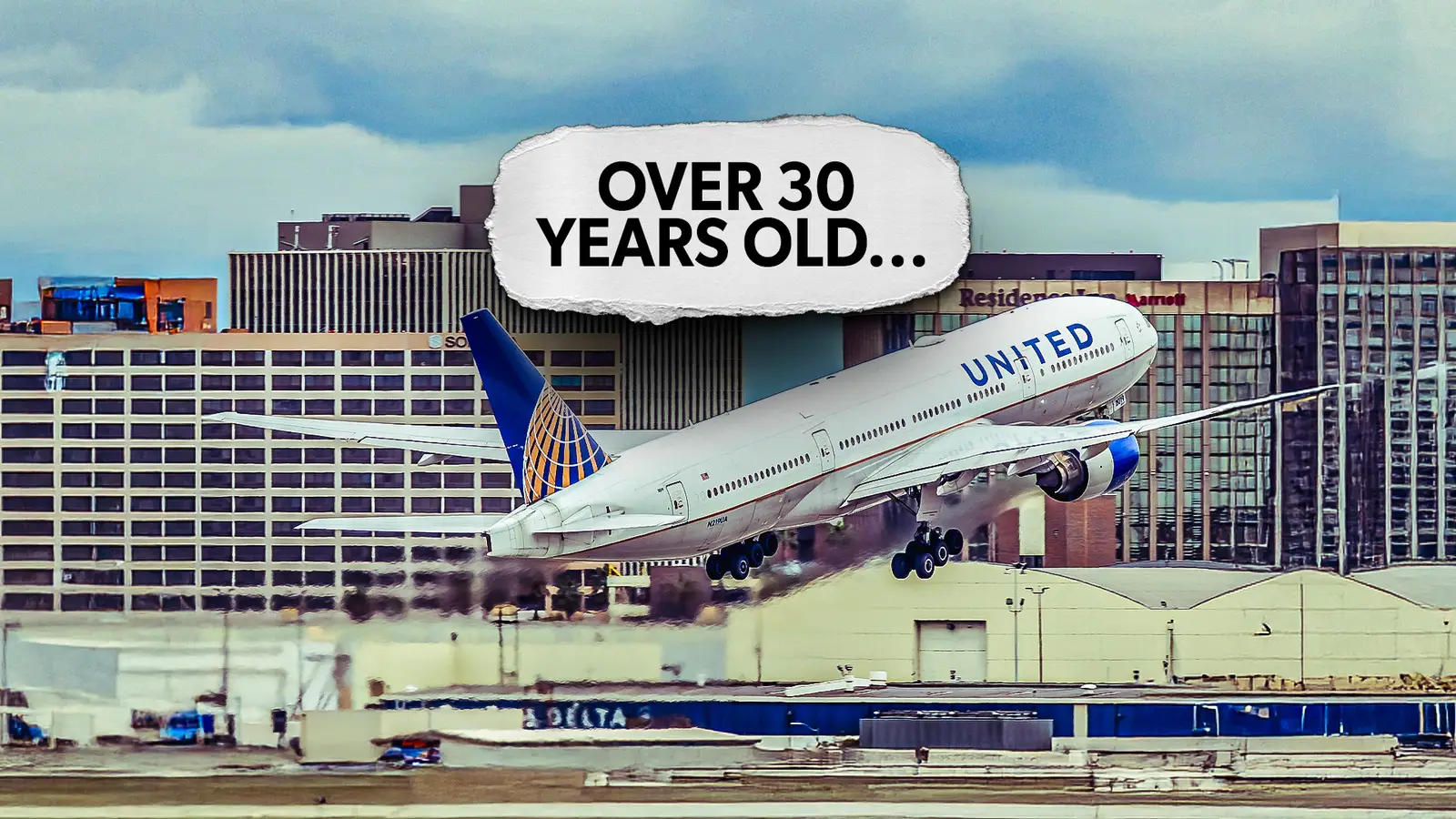
Boeing is one of the largest commercial aircraft manufacturers in the world. The aerospace giant’s commercial aviation business segment employs nearly 50,000 employees around the world, including those located at its major manufacturing facilities in Everett, Washington, and Charleston, South Carolina. The company was first founded in July 1916, over 100 years ago. Since then, Boeing has grown to become one of the largest aviation companies in the world, as it recorded over $32 billion in revenue in 2024.
Boeing has offered a diverse variety of airliners over the years. The company is well-known for its production of one of the most popular narrowbody airliner series of all time, the Boeing 737 family. Boeing has also produced one of the most notable aircraft of all time, the Boeing 747, which features an upper-deck and was nicknamed the “Queen of the Skies.” However, in recent years, Boeing has expanded its production to include several popular widebody aircraft, beyond the Boeing 747. Let’s take a closer look at the Boeing 777 series, the most popular widebody airline family of all time, as well as some of the oldest Boeing 777s that are still in commercial service today.
The Oldest Boeing 777-200 Still Flying
According to ch-aviation, the oldest Boeing 777-200 currently active is registered as N771UA. This aircraft is operated by United Airlines and has a manufacturing serial number of 26932.
United Airlines first ordered this aircraft, one of the first Boeing 777-200s ever built, in October 1990. This aircraft flew for the first time in August 1994 before being delivered to United Airlines in November 1995 as a company-owned aircraft. This makes the aircraft approximately 31.20 years old.
Like many United Airlines Boeing 777s, N771UA is powered by two Pratt & Whitney PW4000 turbofan engines, instead of the other engine options from Rolls-Royce and General Electric. Additionally, according to ch-aviation, this aircraft can fit a maximum of 364 passengers. United Airlines has configured this aircraft with 234 economy seats, 102 economy-plus seats, and 28 business class seats.
The Other Boeing 777-200s Still Flying Today
As the Boeing 777-200 was first introduced in June 1995, the majority of this fleet is still active and flying. United Airlines operates many of the early Boeing 777-200 aircraft, including N772UA, N7773UA, and N7774UA, each of which is around 31 years old. Additionally, according to ch-aviation, United Airlines operates the following Boeing 777-200 fleet, with the following ages:
Shortly after United Airlines introduced N781UA into commercial service, Boeing certified and began deliveries of the 777-200ER. This variant featured additional fuel capacity and increased maximum takeoff weight (MTOW), which helped to allow the aircraft to fly transoceanic routes. Boeing introduced the first Boeing 777-200ER with British Airways in July 1997. According to ch-aviation, the first 777-200ER that is still active is G-VIIA, flying with British Airways.
With the introduction of the Boeing 777-200ER, most commercial airlines opted for the extended-range variant instead of the original variant, the 777-200. Even so, All Nippon Airways operates the two other active 777-200s, JA713A and JA714A. The older of the two, JA713A, was delivered to ANA in Mach 2005, making the aircraft 20.57 years old. Meanwhile, JA714A was delivered to ANA in June 2005, making the aircraft 20.30 years old.
Why Boeing Developed The Boeing 777 Series
Early studies of the Boeing 777 series can be traced back to the late 1970s. At this time, Boeing was seeing success with the Boeing 747 but also wanted to introduce a twin-engine widebody airliner. This led to the development of prototype aircraft that would later become the Boeing 757 and the Boeing 767. Boeing also developed the 777 concept, a trijet aircraft, which would compete with the Douglas DC-10 and the Lockheed L-1011. However, as the extended-range twin-engine operational performance standards (ETOPS) were introduced, Boeing no longer needed a trijet airliner and scrapped the proposal.
However, in the 1990s, Boeing began developing a new aircraft similar to the original 777 concept. At the time, Boeing had successful widebody aircraft like the 747 and 767, but there was growing demand for a new twin-engine jet that could carry more passengers than the 767 over long distances. However, this aircraft also needed to be more fuel efficient than the quadjet Boeing 747.
Because of this, Boeing collaborated with eight different airlines, including United Airlines, ANA, British Airways, and Cathay Pacific, to begin developing a new world-class widebody aircraft powered by only two engines. This customer-focused approach focused on supporting the “hub-bypass” model, as the aircraft could fly long distances with just two engines. This made the newly developed 777 ideal for point-to-point routes that did not require stops at major hubs.
A Brief History Of The Boeing 777
The Boeing 777 was engineered entirely using computer-aided design (CAD) systems, allowing for better precision and collaboration among engineering teams. This also allowed Boeing to develop the aircraft without extensive use of mock-ups, helping the company design the aircraft for less than $5 billion.
Major assembly of the aircraft began in January 1993, and the first Boeing 777 was rolled out on April 9, 1994. This aircraft conducted its maiden flight on June 12, 1994, kicking off a flight testing program that took just under a year. The Boeing 777 was officially type certified by the Federal Aviation Administration (FAA) and the European Joint Aviation Authorities (JAA) on April 19, 1995.
The first Boeing 777 was delivered to United Airlines in May 1995. United Airlines officially introduced the aircraft into commercial service on June 7, 1995, flying from Denver International Airport (DEN) in Colorado to Chicago O’Hare International Airport (ORD) in Illinois. Since then, over 1,750 total Boeing 777s have been delivered to global airlines around the world. Currently, the largest operators of the Boeing 777 are shown above.
The Major Design Features And Performance Specifications Of The Boeing 777
The Boeing 777 family was engineered with a number of advanced technologies. The 777 was the first Boeing commercial airliner to utilize fly-by-wire flight controls. However, instead of utilizing sidestick controllers like other airliners, Boeing kept the conventional yoke on the flight deck. The flight deck also features fully configurable avionics, Honeywell LCD glass cockpit flight displays, and the first use of a fiber optic avionics suite on a commercial airliner.
Additionally, like many other airliners, the Boeing 777 can be configured with several different engine options. This includes the Rolls-Royce Trent 800, the General Electric GE90, or the Pratt & Whitney PW4000. Each of these engines can provide the aircraft with up to 98,000 pounds of thrust. This helps the aircraft achieve the following performance specifications:
Inside the cabin, airlines could configure the aircraft into four-abreast seating in first class to ten-abreast seating in economy class. This allowed the first variant, the 777-200, to seat up to 313 passengers in a two-class configuration or 305 passengers in a three-class configuration. Additionally, the larger 777-300 could seat up to 396 passengers in a two-class configuration or 368 passengers in a three-class configuration.
The Next Step For The Boeing 777 Family
The Boeing 777 series has changed significantly over the years, specifically to stay modernized and maintain its dominance in the widebody commercial aircraft market. Due to the aircraft family’s past success, it is no wonder that Boeing will soon look to introduce a new variant in the series, called the Boeing 777X.
The Boeing 777X represents the next evolution of the 777 series, combining the proven capabilities of current 777s with the advanced technology from the Boeing 787 Dreamliner, another popular widebody aircraft. Currently, the Boeing 777X family is made up of two aircraft variants: the 777-8 and the 777-9. Additionally, it also has plans to introduce a freighter variant of the 777-8, called the 777-8F.



